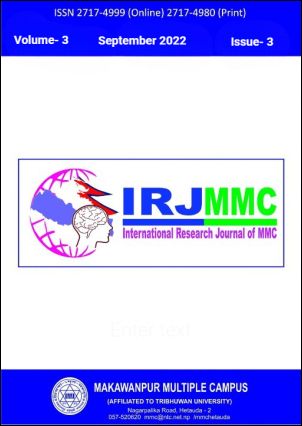Assessment of Bird Diversity and Abundance in Karra River Basin, Hetauda, Makawanpur
DOI:
https://doi.org/10.3126/irjmmc.v3i3.48630Keywords:
abundance, bird diversity, Hetauda, Karra River, threatsAbstract
The main objective to carry out this study was to determine seasonal diversity, abundance, and ongoing threats to birds of the Karra river belt, Hetauda, Nepal. This study is based on observation. The bird survey methods and threat assessment techniques were used to analyse the data. A total of 153 bird species were recorded belonging to 15 orders and 38 families. Order Passeriformes was found dominating order with 70 species. Among 153 species, 98 species were residents, 37 species were winter visitors, 17 species were summer visitors, and one species was found, vagrant. One-way ANOVA revealed that there was a significantly different (F = 0.8872, df= 2, P < 0.0422) in bird diversity in three different blocks in two different seasons. The Shannon winner diversity index shows that the winter season (H=1.86) was more diverse than the summer season (H=1.62). The evenness index showed that birds were evenly distributed in the winter season (E=0.8815) and then summer (E=0.8761). Bird species richness was found high (126) in moderately disturbed land use type (block 2) than other supporting intermediate disturbance hypotheses. Out of 153 birds recorded, 26 were common in their relative abundance. Habitat destruction, pollutionin the industrial belt, mining, overfishing, poaching, and keeping of cage birds, and lack of awareness were the major threats to birds around the study area.

